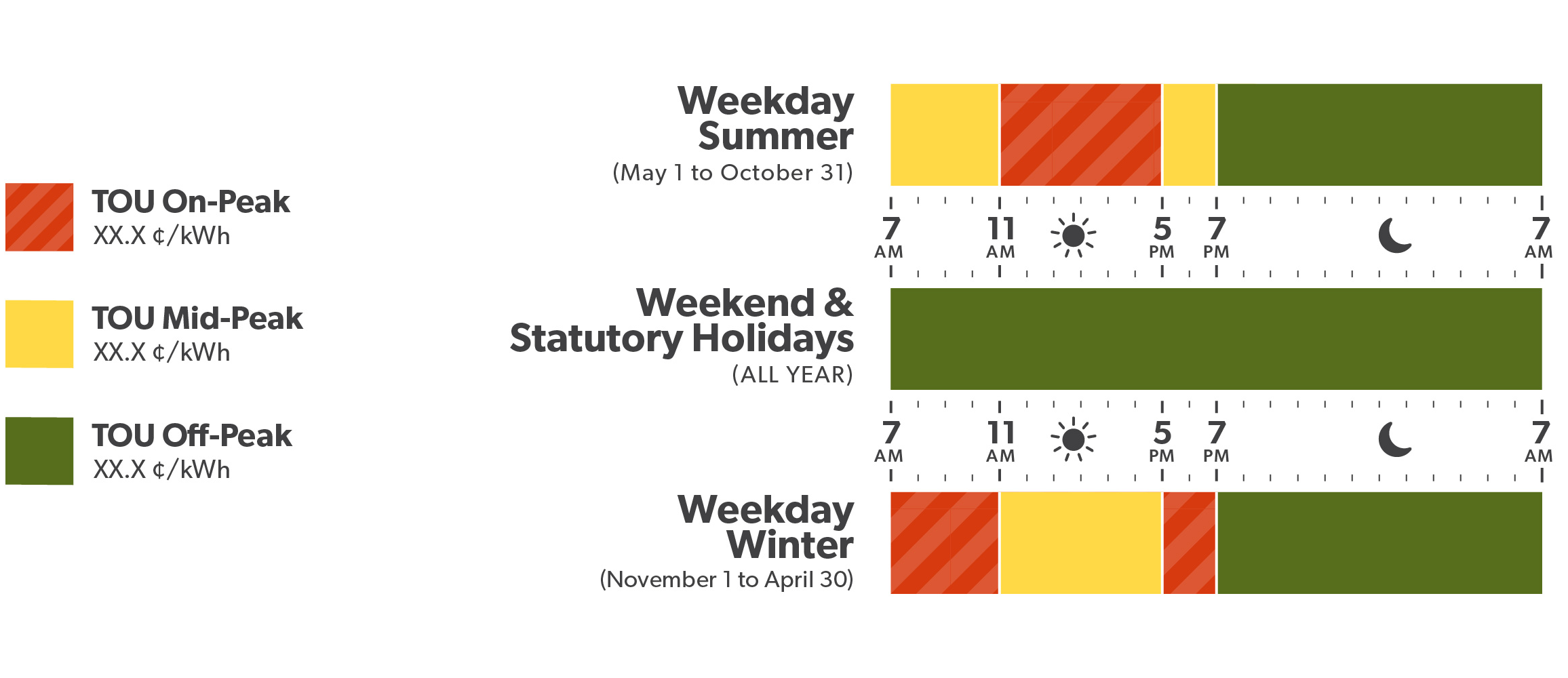Understanding how Time-of-Use (TOU) rates work is a first step towards helping to manage your electricity costs. Did you know that with Time-of-Use rates it’s cheaper to plug in your computer at 9 p.m. than at 9 a.m.? Or that you’ll pay less for electricity by using your electric lawnmower on the weekend than during the week? Shifting your electricity usage to times when electricity is cheaper is one way to lower your electricity costs.
Electricity Time-of-Use rate periods

Time-of-Use rates are different depending on when you use electricity. There are three periods:
- Off-peak, when demand for electricity is generally lower. Ontario households use most of their electricity – nearly two thirds of it – during off-peak hours.
- Mid-peak, when demand for electricity is moderate. These periods are during the daytime, but not the busiest times of day.
- On-peak, when demand for electricity is generally higher. These are the busier times of day – generally when people are cooking, starting up their personal electronics and running heaters or air conditioners.
Why Time-of-Use rates vary
Time-of-Use rates vary according to demand. They are cheapest when demand is lowest: during the evenings, on weekends and on holidays.
In Ontario, when demand is lower, most of the power we use comes from sources like nuclear generators and large hydroelectric stations, which are designed to run all the time. This is called baseload power.
As daytime begins, more people turn on their lights and appliances, and businesses ramp up their operations for the workday. These are high demand times for electricity. If all of the baseload power is used, the province turns to other sources like natural gas-fired generation, which typically costs more than baseload.
Time-of-Use rates follow a similar pattern: as the demand for electricity rises, the price increases, and as it decreases, so does the price.
Summer and winter rate periods
TOU price periods are different in the summer (May 1 – October 31) than they are in the winter (November 1 – April 30). No matter which season, on weekends and holidays the cheapest rates are in effect all day.
SUMMER WEEKDAYS (May 1 – October 31)
- In summer, electricity use peaks during the hottest part of the afternoon, when air conditioners are running on high. On-Peak hours are mid-day.
WINTER WEEKDAYS (November 1 – April 30)
- In winter, less daylight means electricity use peaks twice: once in the morning when people wake up and turn on their lights and appliances, then again when people get home from work. There are two sets of On-Peak hours to reflect this.
Conservation is another way to help manage your electricity bill. Find out about current electricity conservation programs.
Your bill shows how much electricity you use
Your electricity utility measures your electricity use in kilowatt-hours (kWh). Your bill shows the number of kilowatt-hours you used in the billing period.
One kilowatt-hour is the same as using 1,000 watts of electricity for one hour. For example:
- Running 100 10-watt LED light bulbs for one hour uses 1 kWh of electricity.
- Running a single 60-watt bulb for 17 hours also uses 1 kWh of electricity.